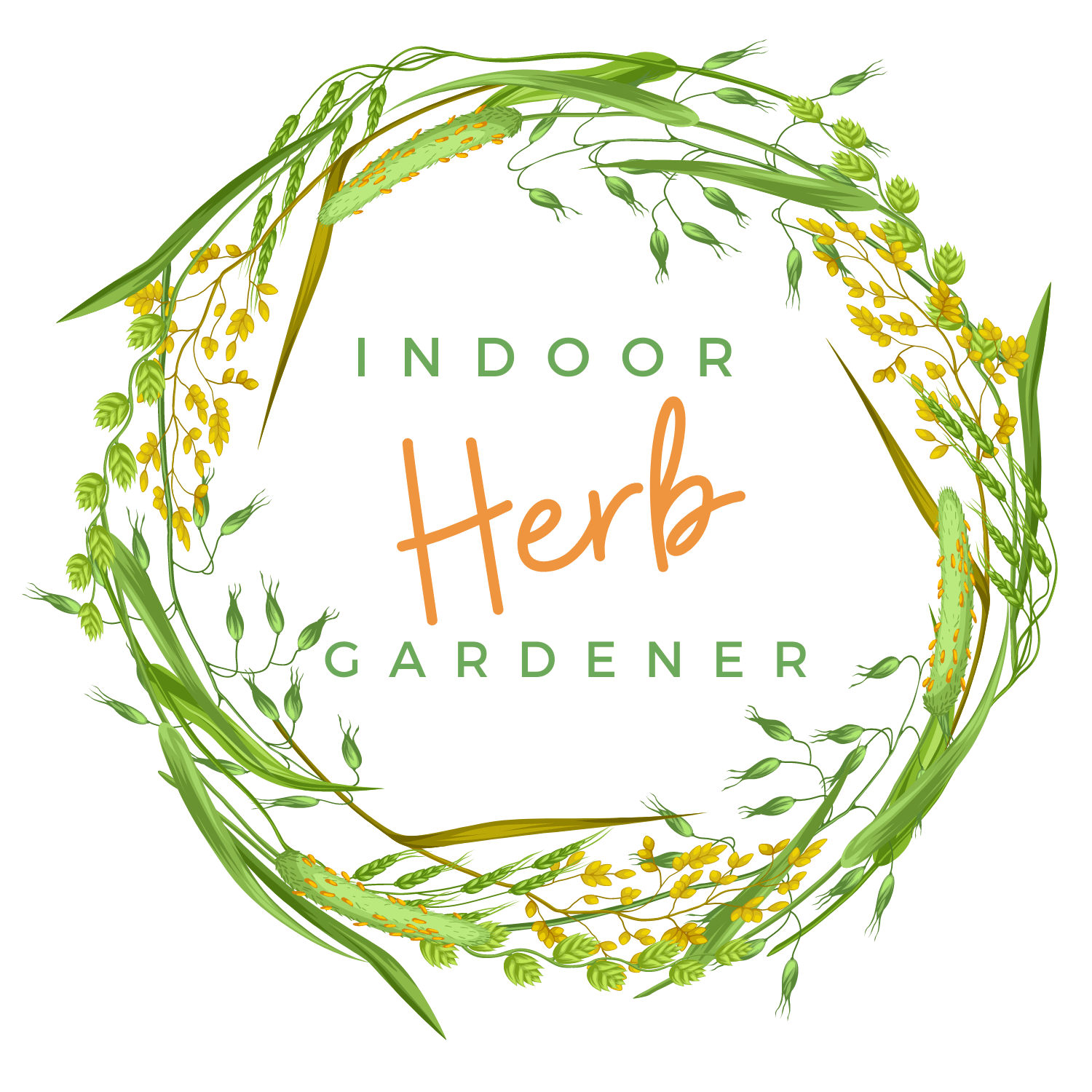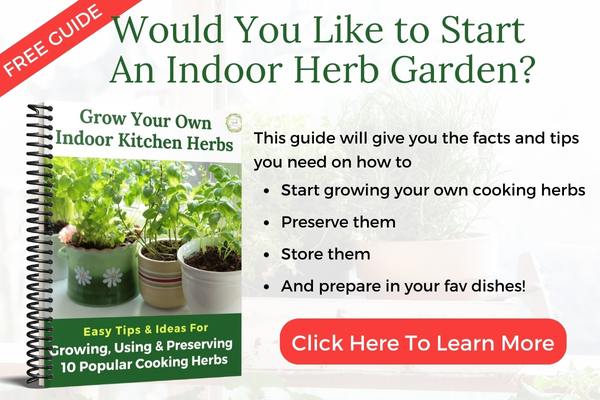Hey! By the way… IndoorHerbGardener is reader-supported. When you buy through links on our site, we may earn an affiliate commission and as an Amazon affiliate, we earn from qualifying purchases. Thanks in advance for your support!

Learning how to grow your own herbs indoors is an exciting adventure and definitely worth the time and learning curve. Who doesn’t want to walk into their spare bedroom in the middle of a blizzard and cut some fresh rosemary and thyme for their potato soup that is currently simmering on the stove? Or for yours truly, I want to cut fresh cilantro anytimeIwant for my salads, scrambled eggs, veggie tacos, black beans and rice, etc. etc…regardless what time of the year it is!
Beginning herb gardeners though may worry about which types of herbs they should grow. There are of course, many different herbs available, and some are a little more difficult to grow than others. There are a few types of herbs that are especially easy to grow for beginners though. These plants are generally the more hardy of the group and don’t require as much hand holding to survive.
Below are 7 of the easiest herbs to grow indoors
**When I refer to sun and shade below, keep in mind that this could relate to either which windows you keep the plants in or to the grow lights you have set up. In reality, if you’re not using grow lights for your herbs then you want them to be in a window sill (or as physically close as possible) that will give them at least 6 hours of sunlight each day. You will see below though that a couple of your herbs will actually require grow lights to truly survive.
If you’re curious about which grow light to use, I recommend a full spectrum LED grow light. You can read more about how to choose grow lights here.
Parsley – Parsley is a relatively hardy annual that can grow just about anywhere. Both flat-leaf and curly varieties are easy to care for and grow very well without a lot of extra care. It can do well in full sun to light shade, and needs rich soil that is well-drained but moist. It doesn’t do particularly well in heat. Germination can be a bit difficult so understand that you could go through several seeds before you actually get a seedling to emerge.
Vietnamese Coriander – This annual herb doesn’t need exceptionally rich soil, and isn’t extremely particular about sun and shade. It can do well in full sun or light shade. It is relatively easy to care for, and can last for months. Keep an eye on it in terms of lighting and be open to shifting it around based on how healthy/not healthy it looks.
Chives – Chives are a perennial herb. They can grow well in almost any soil, and almost any conditions. In fact, chives have been known to be seen growing in old gardens that haven’t been tended in many years! It prefers full sun but can be grown in a lower light too. It does do better in rich soils, but doesn’t need it to survive. Chives can be grown from seed but you may be better off starting them from seedling.

Oregano – This herb is an extremely popular herb, and it goes well with many different types of foods – as I am sure you know! It does need full sun and really well-drained soil so make sure your pot has lots of drainage holes. I have killed many a potted oregano in my day due to overwatering! And back of your mind, your oregano might actually require a grow light. It’s a Mediterranean plant so used to lots of sun and heat to survive.
Thyme – Thyme is a perennial herb. It’s a wonderfully smelling, small, shrub-like plant that requires full sun and moist, well-drained soil. It is quite hardy and doesn’t require much care at all but same as oregano it will most likely need a grow light to survive AND well-drained soil. I have killed even more thyme than oregano over the years due to overly soggy soil.
Basil – Basil is a warm-weather annual herb. It is hardy but requires hot, dry conditions to reach peak flavor. It needs full sun, and very rich, moist soil. This is another plant that is really hard to start from seed. I have done it but out of say the 8 seeds I plant, one makes it – so maybe opt for a seedling instead…?
Additionally, because basil likes that hot dry weather, you are better off growing a variety indoors with smaller leaves. For example, Thai Basil or Dark Opal. This is because the basil plant doesn’t have to work as hard to send nutrients to those smaller leaves. Oh, make sure you let its soil dry out between waterings!
Bay – Although it is actually a tree, this is actually a very good herb for beginners to grow. It’s a remarkably hardy plant. Mine has managed to stand up to my abuse and neglect for several years now. It needs full sun to light shade, and rich, well-drained soil. It will tolerate variations in conditions rather well. Bay leaves reach their full flavor when dry, so press them between layers of paper towels inside heavy books for a few weeks before you use them.
Remember to keep in mind all the time, lighting and watering. Some herbs require a lot of light and some not so much. Some like moist soil, some prefer it drier. These herbs are easy to care for – in the right growing conditions. And growing indoors is a totally different ballgame than outdoors. Keep a close eye on them and a checklist handy close by for what each plant requires and your herbs should totally thrive for you.
How To Start An Indoor Herb Garden-Everything Explained
7 of the Best Medicinal Herbs to Grow Indoors

